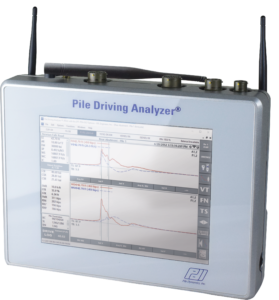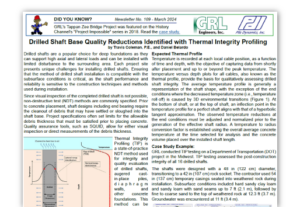What is the maximum length/diameter (L/D) ratio for low strain integrity (PIT) tests?
The maximum length/diameter ratio depends on pile uniformity, soil strength, and the actual length and diameter measurements. Under good conditions, the L/D ratio may exceed 30 — even reaching 60. For more information click here.
Nevertheless, a drilled pile does not guarantee that the cross section will have an uniform length. At high L/D ratios it may be impossible to assess the full pile length; assuming that the pile has some natural non-uniformity and that the soil has some reasonable strength. Regardless, PIT is still useful when evaluating the upper portion of the pile, which is often the location of defects. Comparing many piles against one another may develop a typical “pile signature.” Furthermore, it may help identify an unusual pile.
If the drilled pile is not installed, Thermal Integrity Profiling (TIP) is an alternative testing method for piles with high L/D ratios. Engineers and researchers have applied the TIP method to drilled shafts, bored piles, augercast piles, CFA piles, micropiles, and soil nails. Please visit the TIP for more information on how Thermal Integrity Profiling evaluates concrete quality and uniformity as a function of the complete pile length without depth limit hindrance.
Return to FAQs



